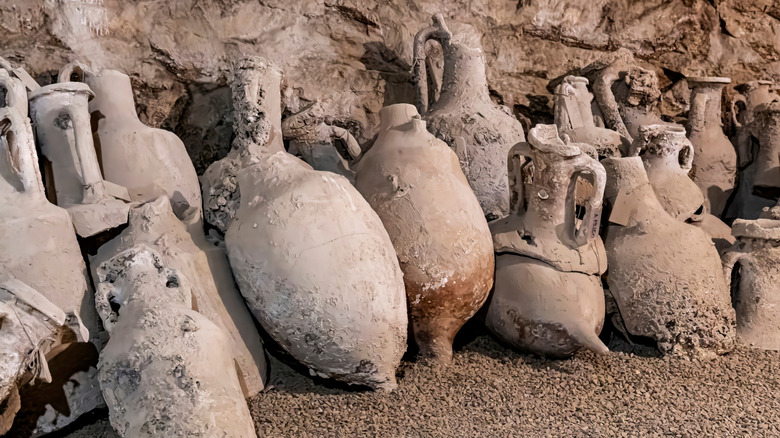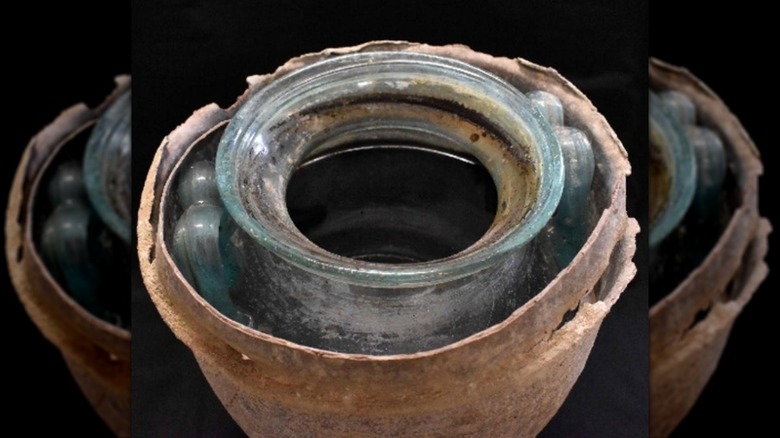How An Ancient Roman Wine Survived For 2,000 Years
In 2019, a family in the small town of Carmona, Spain made a surprising discovery while renovating their home: They found an Ancient Roman tomb. Archaeologists soon started excavating and were excited about studying the well-preserved site which turned out to be the mausoleum of a wealthy family that held the remains of six people. But no one expected that along with urns, jewelry, fabrics, and perfume, the team would find the oldest surviving wine (still in liquid form) in the world, dated to the first century A.D.
How did the wine survive for this long? Archaeologists believe that it's due to the tomb's near perfect condition. It seems as if, once the last individual was buried, the tomb was sealed and never reopened. This limited the amount of oxygen that entered the site, helping to preserve its contents, including the ancient wine. The relatively cold temperature of the tomb might have also aided in slowing down the decay of the wine.
Another factor that might explain this discovery is that the urn that contained the wine was tightly closed. This would have helped minimize the amount of evaporation that took place over the centuries. Thanks to all these factors, even though it was oxidized, the wine managed to survive for an impressive amount of time.
The wine is an important archaeological find
To determine whether the red liquid found in the urn was actually wine, researchers from the University of Cordoba compared its chemical makeup to that of three wines from the region. In September 2024, they published their conclusion in the Journal of Archaeological Science: Reports. Despite the fact that wine in Ancient Rome looked very different to modern wine, the team managed to confirm that the liquid in the urn was indeed wine — white wine to be specific. The liquid was red because the wine had oxidized over the years. (Word to the wise, a change in color is one of the telltale signs that wine has gone bad.) Even if it wasn't spoiled, you wouldn't have wanted to drink this wine anyway since it also contained the cremated remains of a man.
Finding this site is important for various reasons. One is simply that it's incredible to stumble upon the oldest surviving (still liquid) wine on the planet. (The title was previously held by the Speyer wine bottle, which was found in Germany in 1867, and which is dated to about A.D. 325.) But the discovery also gives us an insight into burial rituals in Ancient Rome and the importance of certain things in this society. The fact that the women were buried with perfume and jewels while the man was buried with wine and a ring tells us about gender division in this empire. It also shows how significant wine was for everyday life; it was placed in the mausoleum so that its owners could enjoy it in the next life. So, while some bottles of vintage wine have been sold for nearly $60,000, this wine is absolutely priceless.

